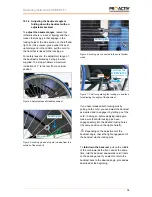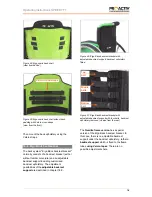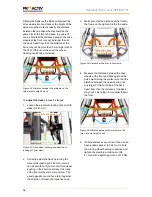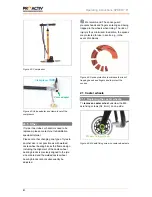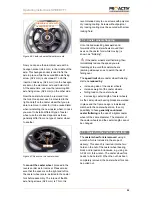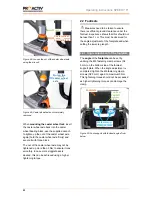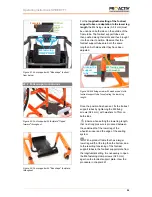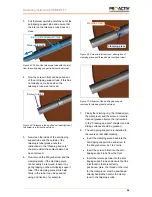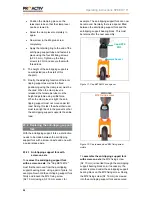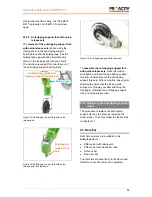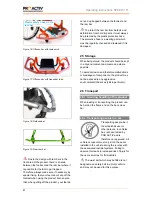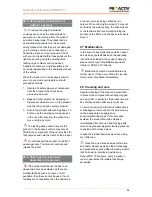
Operating instructions SPEEDY F1
22
Figure 46: Caster wheel with aluminium axle
Now you can see the aluminium axle with a
hexagon socket (AF 4 mm) in the middle of the
axle. This hexagon socket is used to fix the
axle in place, while the second M6 axle fixing
screw (AF 4 mm) is unscrewed. To do this,
insert an Allen key (AF 4 mm) into the hexagon
socket on the aluminium axle and hold it still.
At the same time, unscrew the remaining M6
axle fixing screw (AF 4 mm) on the other side.
Now the caster wheel can be removed from
the fork. One spacer each is mounted to the
right and left on the caster wheel that you are
able to remove in order for it to be reused later
when reinstalling the new caster wheel. In case
you want to install a different type of caster
wheel, use the enclosed spacers as these
generally differ from one type of caster wheel
to another.
Figure 47: Spacer on the caster wheel
To
mount the caster wheel
, proceed in the
reverse order as for removal. Please make
sure that the spacers on the right and left on
the caster wheel are re-installed in the caster
fork before assembly. The torque of the M6
axle fixing screws (AF 4 mm) is 7 Nm. It is
recommended only to use screws with polymer
dry locking coating. Screws without polymer
dry locking coating must be secured with screw
locking fluid.
21.2 Caster wheels flapping
Uncontrolled swivelling backwards and
forwards of the caster wheels around their
axes on the caster fork (while moving) is
known as "fluttering".
If the caster wheels start fluttering, then
immediately reduce the speed you are
travelling at to avoid the caster wheels
jamming sideways so as to avoid the risk of
falling over.
The
speed limit
where caster wheel fluttering
starts,
is reduced by
:
increasing size of the caster wheels
increase weight of the caster wheels
falling load on the caster wheels
decreasing caster length of caster wheels
As the caster-wheel bearing blocks are welded
in place and the frame design is individually
matched to the caster-wheel size, the only
possibility to have
generally counteract
caster fluttering
is the use of a lighter caster
wheel of the same diameter. The diameter of
the caster wheels and the caster length cannot
be changed.
21.3 Replacing the caster wheel forks
The
caster wheel fork is removed
using a
wrench which is included in the scope of
delivery. This wrench is inserted into the two
holes on the nut of the caster wheel bearing
block and turned anti-clockwise, e.g. using an
AF 24 mm fork wrench. The caster wheel fork
needs to be held still. When the nut has been
completely removed, the caster wheel fork can
be pulled out.
Aluminium axle with
hexagon socket
Spacer





